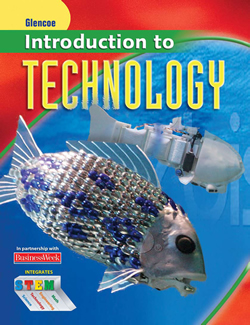
Introduction to TechnologyUnit 1: The Nature of TechnologyBusinessWeek Tech News(Chapter 6, p. 118) Read the complete article and answer the question from your textbook: Critical Thinking How might using an e-book affect studying English language arts? Amazon's Breakthrough E-book Can a wireless connection and the depth of offerings from the online bookseller make the new Kindle reader worth the price? For at least the past decade, gadget makers have been trying, without success, to sell us on e-books—digital devices that can hold and display a virtually unlimited amount of text. Given this sorry track record, the new Kindle e-book reader seems a strange choice for Amazon.com's first foray into consumer electronics. Amazon may be a novice in the hardware business, but the company does know a thing or two about online selling and the book business in general. While the Kindle's $399 price gives me pause, Amazon has wisely made the reader part of a comprehensive service based on the clever use of wireless technology. This just might let it succeed where everyone else has failed. At first glance, Amazon's device resembles the $300 Sony Reader, introduced last year. Not surprising, as both use the same six-inch "electronic paper" display from startup E Ink. This is a very low-power technology that displays not-quite-black text on a not-quite-white page and lets you "turn" pages not quite instantaneously with the flick of a button. Amazon deserves high marks for coming up with the first e-book reader to function completely independently of a computer, and for radically simplifying the setup. When you purchase a Kindle with your Amazon account information already entered, a radio built into the device gets you up and running on Sprint Nextel's data network with no activation and no subscription required. You take the reader out of the box, go straight to Amazon's Kindle store, make your book selection, and it will download in seconds. (War and Peace took less than a minute.) Ten Bucks a Book Amazon does its best to recreate the Web shopping experience on the Kindle, within the limits of the display's size and ability to display just four shades of gray. When you're online, you can search book titles (using a just barely serviceable keyboard), download sample chapters, and read personalized recommendations, detailed book descriptions, and reviews. Amazon's goal is to make its entire book catalog available for the Kindle, though it's starting with just 90,000 titles out of the 5.8 million listed in Books in Print. That's still more than four times the number offered by Sony, and it includes most current best-sellers. Books typically cost $10—more than a mass-market paperback, but less than a trade paperback or hardcover edition. The Kindle's network connection provides a lot more than books. Electronic editions of 11 newspapers, $6 to $15 a month, are delivered to the Kindle as each day's papers come out. Eight magazines ($1.25 to $3.49 a month) have signed up, including Time and The Atlantic Monthly. And you can subscribe to 300 different blogs for just $1 or $2 a month. The charges cover both ad-free content and the cost of delivery over the Sprint network. Don't worry about storage capacity: Even without an optional storage card, the Kindle holds hundreds of books. Fade to Black Links in blogs will take you to other Web sites, though the Kindle's limited display capabilities mean some pages work well while others are barely readable. The device also has a built-in dictionary and online access to Wikipedia, and you can add your own notes and bookmarks. I don't think any form of electronic print will ever surpass the experience of ink on paper, but the Kindle comes as close as anything I've tried. I wish the contrast of the page was higher. The turning of pages could also be a bit faster. And I'd really like it if a brief but annoying fade to black with each page flip could be eliminated. E Ink is working on improved displays, including color. Past e-book efforts forced you to accept a reading experience that was inferior to print in exchange for the ability to carry a huge volume of text in a small package. Not many people found the deal worth it. The Kindle's wireless connection and the quality of the Amazon store add a new and exciting dimension to the e-book. I just hope Amazon can do the one thing that no e-book vendor has accomplished: sell enough Kindles to drive the price down to the point where it becomes a true mass-market product. By Stephen H. Wildstrom November 19, 2007 |  |
















